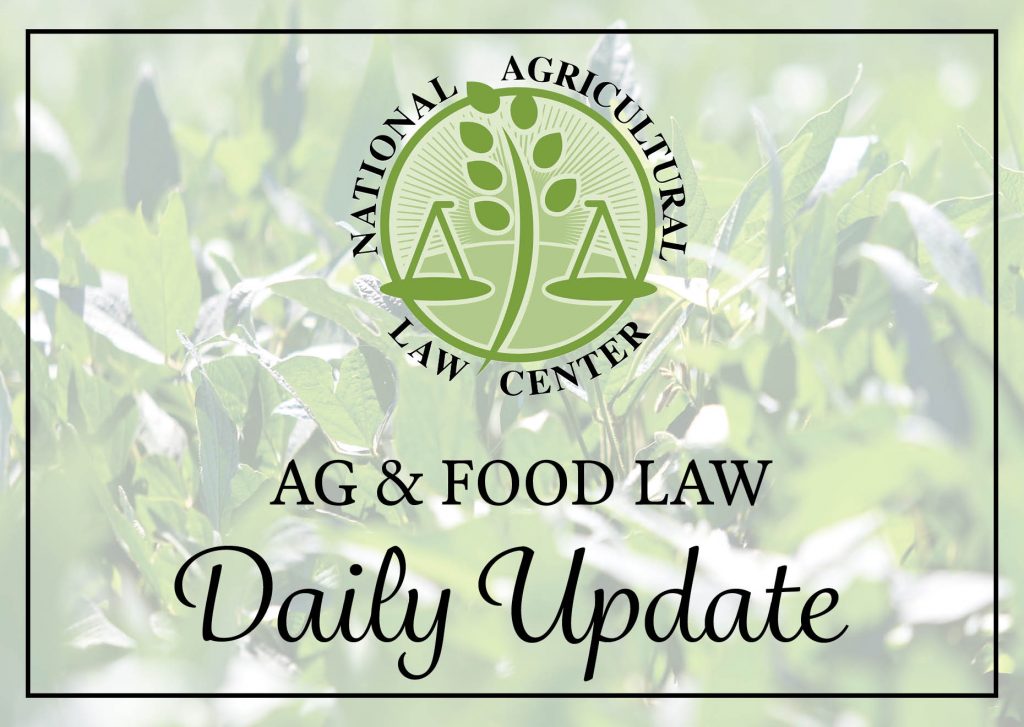A comprehensive summary of today’s judicial, legislative, and regulatory developments in agriculture and food. Email important additions HERE.
JUDICIAL: Includes ESA, environmental law
In Ctr. for Biological Diversity v. U.S. Fish and Wildlife Serv., No. 2:19-cv-14243, 2020 WL 5548362 (S.D. Fla. Sept. 16, 2020), the court considered whether the defendant’s decision not to list the Florida Keys mole skink as endangered or threatened under the Endangered Species Act (“ESA”) was arbitrary and capricious. Before the court were two motions for summary judgment, meaning that both the plaintiff and the defendant agreed that they did not dispute the facts of the case, and each believed that the judge could rule in their favor based purely on the law. The Florida Keys mole skink is a small lizard found only on the islands of the Florida Keys. It has been listed as threatened under Florida state law since 1974. In 2010, the plaintiff petitioned the defendant to list the skink under the ESA. In 2011, the defendant issued a finding that the plaintiff’s petition provided substantial evidence indicating that listing the skink under the ESA may be warranted. Finally, in 2017, the defendant concluded that listing the skink was not warranted. That decision prompted the plaintiff to file suit, arguing that the defendant’s final decision was not made according to ESA requirements, and was not supported by the evidence. Ultimately, the court found in favor of the plaintiff. The court concluded that the defendant had failed to base its decision not to list the skink on “the best available science” as required by the ESA. Specifically, the court found that the defendant had not sufficiently explained why it relied on a map developed by the University of Florida predicting how much land will be lost to sea level rise to make its decision, when the defendant itself believed that the National Oceanic and Atmospheric Administration had created a more accurate model. Accordingly, the court found in favor of the plaintiff and set the listing decision back to the defendant to be re-evaluated according to the best available science.
REGULATORY: Includes NOAA
NATIONAL OCEANIC AND ATMOSPHERIC ADMINISTRATION
Proposed rule the National Marine Fisheries Service (NMFS) withdraws the Commerce Trusted Trader Program proposed rule, which published in the Federal Register on January 17, 2018. Info here.
Proposed rule NMFS proposes regulatory amendments that would modify Federal permit conditions and impose participation requirements for certain Federally-permitted vessels when fishing for Pacific cod in state waters adjacent to the exclusive economic zone of the Bering Sea and Aleutian Islands during the State of Alaska’s parallel Pacific cod fishery. Info here.
Temporary rule NMFS is prohibiting directed fishing for Pacific cod by catcher vessels greater than or equal to 60 feet (18.3 meters (m)) length overall (LOA) using pot gear in the Bering Sea and Aleutian Islands management area (BSAI). Info here.
Final rule implements International Maritime Organization (IMO) requirements in Inter-American Tropical Tuna Commission (IATTC) Resolution C-18-06 (Resolution (Amended) on a Regional Vessel Register) and amendments to existing regulations governing inclusion on the IATTC Regional Vessel Register (Vessel Register) by purse seine vessels fishing in the eastern Pacific Ocean (EPO). Info here.
